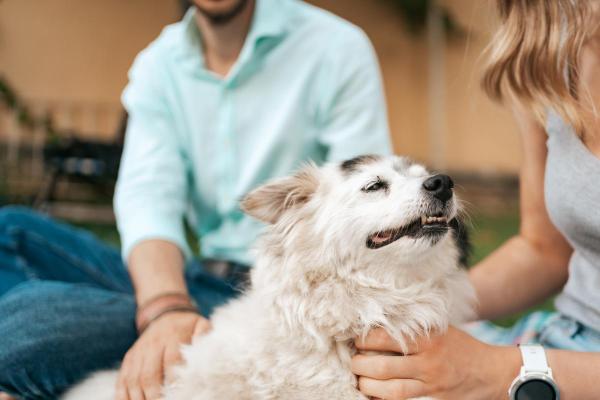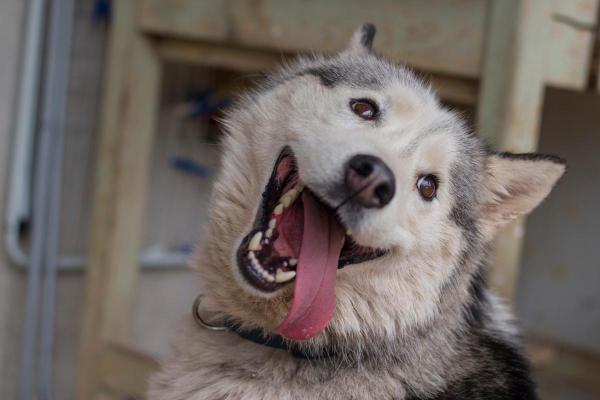How Do I Know if My Dog Views Me as the Alpha or Pack Leader?



See files for Dogs
For many years, dog owners were advised to establish dominance as pack leaders to control and ensure obedience in their canine companions. This advice was rooted in the outdated belief that dogs lived in hierarchical packs, similar to wolves, with an alpha male or female leading the group. However, recent research has debunked this theory, revealing that dogs are not wolves, and the concept of a pack leader doesn't apply to domestic dogs.
Contrary to the pack leader theory, dogs still enjoy feeling included in a pack and can form strong bonds with specific family members, even developing a preference for one person.
In the upcoming AnimalWised article, we will delve into the signs that indicate if your dog sees you as their favorite person.
Do dogs need a pack leader?
Dogs have been domesticated for millennia, forging an intricate and enduring bond with humans. They have served as loyal companions, steadfast working partners, and even fearless protectors. The human-dog relationship is a tapestry woven from countless threads of mutual affection, understanding, and respect.
Traditionally, dog behavior was interpreted through the lens of wolf studies, painting a picture of dogs as pack animals with a rigid hierarchy and the need for a dominant leader. This perception gave rise to dominance-based training methods, advocating for the use of force and intimidation to establish the owner's authority over the dog.
However, more recent research has shed new light on canine behavior, revealing a stark contrast to their wild counterparts. Dogs, unlike wolves, do not adhere to a strict hierarchy and may not require a dominant leader to feel secure. In fact, dominance-based training methods often prove detrimental to dogs, inducing fear, anxiety, and aggression.
Instead, dogs thrive on companionship and positive reinforcement, flourishing when treated with mutual respect and trust. They are social creatures, seeking affection and guidance from their human counterparts.
Contrary to popular belief, dogs do not perceive humans as rivals in a struggle for dominance. Scientific evidence consistently refutes the notion that establishing dominance through eating first, leading through doorways, or adopting an elevated position is an effective training strategy. Such methods, including physical subduing, not only lack scientific backing but also inflict undue stress and cruelty upon our beloved companions.
While domesticated dogs may not live in true packs in the wild sense, they still retain many of the social instincts that helped their ancestors survive. This means that they have a strong need to belong to a group and will often form close bonds with their human families and other dogs. These bonds can provide dogs with a sense of security and companionship, and they can help to reduce stress and anxiety.
Why do dogs favor certain family members?
While dogs may not adhere to a traditional pack leader structure, they do establish strong connections with certain individuals within their human family. Various factors contribute to this phenomenon.
It's crucial to recognize that not all dogs exhibit a preference for one family member over another. Some dogs, characterized by their social and outgoing nature, relish interactions with all family members equally.
On the other hand, more introverted dogs might gravitate towards the companionship of a single individual.
Furthermore, the bond between a dog and a particular family member is dynamic and may evolve over time, influenced by changes in the dog's needs and shifts in the family dynamics.
Having that said, while dogs may not explicitly express their preferences in human language, there are several subtle cues and behaviors that indicate a dog's affection and attachment to a particular individual. Below, we will explain in more detail some of these cues.
Constant companionship or shadowing
Dogs are social creatures that thrive on companionship and interaction. When they develop a strong bond with a particular person, they often exhibit a desire to be near them as much as possible. This constant companionship is a clear indication of their affection and attachment.
This constant companionship can sometimes be perceived as annoying or intrusive, especially if the dog is constantly underfoot or bumping into you. However, it is important to remember that this behavior is a sign of their affection and trust. Instead of getting frustrated, try to redirect their attention with a brief play session or by providing them with a chew toy or other activity.
In most cases, shadow chasing is a harmless behavior. However, if your dog is shadow chasing excessively or if it seems to be causing them anxiety, you should talk to your veterinarian. They can help you rule out any underlying medical conditions and can recommend strategies for managing the behavior.
Exuberant greetings
Dogs' enthusiastic greetings are a heartwarming display of affection and excitement. Their unrestrained joy is evident through jumping, tail wagging, attention-seeking, and sometimes vocalizations. While overwhelming at times, these exuberant greetings showcase the deep bond and trust they have in you.
To manage their enthusiasm, establish a greeting area, encourage calm behavior, and use toys to redirect excessive excitement. Embrace their exuberance as a natural display of love, and by calmly managing their behavior, you can maintain a harmonious relationship filled with joy.
From polite noses to exuberant jumps, explore the diverse ways dogs greet their humans and uncover the hidden meanings behind each interaction in our other article.

Sleep proximity
The location where your dog chooses to sleep offers valuable insights into the depth of your bond. If they opt to curl up next to you in bed or settle in a spot nearby, it's a clear indication that they feel a sense of safety and security in your presence.
This choice reflects a profound level of trust, as they consider you a trusted companion and seek the comfort of your proximity during their vulnerable sleep hours.
To manage sleep arrangements, establish clear boundaries, create a calming bedtime routine, and address any underlying anxiety-related behaviors. Remember, sleep proximity is a natural expression of a dog's affection, and by understanding their behavior, you can maintain a harmonious relationship with your furry companion.
Ever wondered what your dog's sleeping position reveals about their personality and mood? Delve into the fascinating world of canine sleep postures in our insightful article.
Playful interactions
Dogs are naturally playful creatures that relish opportunities for fun and interaction with their favorite people. When they initiate playful interactions with you, it's a clear sign that they view you as a trusted companion and enjoy spending quality time together. These playful moments serve as a powerful means of strengthening your bond and fostering a deep sense of connection.
Playful interactions are not only enjoyable for dogs but also serve as a vital part of their development and well-being. Through play, they learn social skills, develop physical coordination, and strengthen their bond with their human companions.
By making time for regular playtime, using engaging toys and games, and responding with enthusiasm, you can strengthen your bond with your furry companion and create lasting memories of shared joy.
Want to know how to curb your dog's rough play? Read our article on strategies for managing aggressive play in dogs.

Protective behavior
Dogs are fiercely loyal and protective of those they consider part of their pack. This protective instinct is deeply rooted in their evolutionary history as pack animals, where they relied on each other for survival. When they form a strong bond with a particular person, they view them as a valued member of their pack and are willing to defend them from harm.
While protective behavior is a testament to a dog's loyalty and affection, it is important to manage it responsibly. Excessive protectiveness can lead to aggression, making it crucial to train your dog to distinguish between real threats and harmless situations.
Deepen your understanding of canine behavior and uncover the fascinating reasons behind dogs' protective instincts of babies in our other article.
Empathetic responses
Dogs have an uncanny ability to sense human emotions, a trait that has been honed through centuries of domestication and close companionship. This emotional sensitivity allows them to pick up on subtle cues, such as facial expressions, body language, and even vocal tone, providing them with insights into our feelings.
When you are feeling down, your dog's behavior may reflect their understanding of your emotional state. They may exhibit increased attentiveness, such as following you closely or staring into your eyes. They may also offer physical comfort, such as nudging you, licking your hand, or curling up next to you. These actions are their way of expressing empathy and a desire to provide solace.
While dogs may not fully comprehend the complexities of human emotions, they can sense our general emotional state and respond in a way that conveys comfort and support. This empathic response is a testament to the depth of their bond with us and their unwavering loyalty.
If you want to read similar articles to How Do I Know if My Dog Views Me as the Alpha or Pack Leader?, we recommend you visit our Facts about the animal kingdom category.







